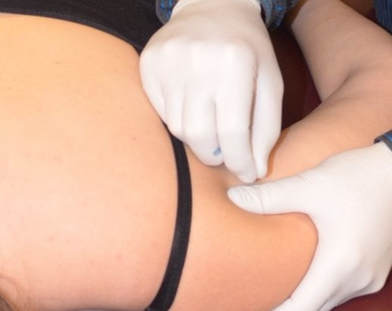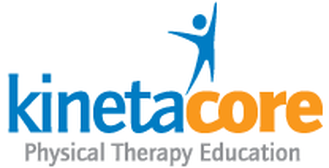What to expect after Trigger Point Dry Needling
How will I feel after a session of TDN?
Following a treatment using Trigger Point Dry Needling it is expected that you will experience some combination of the following:
- Reduction in pain
- Improved mobility
- Quicker recovery time
Possible secondary reactions
- Soreness (mild soreness similar to exercise soreness)
- There may be a mild sore feeling similar to post-exercise soreness following a treatment. This is normal but varies greatly between individuals. It can take anywhere from a few hours to the next day for soreness to begin and may last from 24-48 hours.
- There may be a mild sore feeling similar to post-exercise soreness following a treatment. This is normal but varies greatly between individuals. It can take anywhere from a few hours to the next day for soreness to begin and may last from 24-48 hours.
- Bruising
- Bruising following a treatment is possible, but large bruising rarely occurs. Use ice to help decrease bruising, and if you feel concern please call your provider.
- Shift in mood or emotion
- After treatment you may feel tired, nauseous, emotional, giggly, "loopy", and/or somewhat "out of it". This is a normal response that can last up to an hour or two after treatment.
- Increase in symptoms
- Normally you will have a reduction in your symptoms and an improvement in function within 24 hours of TDN treatment. It is possible however, that your symptoms could become worse. this provides valuable information to your provider about your pain and how best to treat it. If this continues past the 24-48 hour window, keep note of it and inform your provider so they may adjust your treatment plan if needed. TDN may still be able to help your condition even if you experience a worsening of symptoms after a treatment.
- Normally you will have a reduction in your symptoms and an improvement in function within 24 hours of TDN treatment. It is possible however, that your symptoms could become worse. this provides valuable information to your provider about your pain and how best to treat it. If this continues past the 24-48 hour window, keep note of it and inform your provider so they may adjust your treatment plan if needed. TDN may still be able to help your condition even if you experience a worsening of symptoms after a treatment.
What should I do after treatment and what should I avoid?

- Increase your water intake for the 24-48 hours following treatment.
- After treatment, you may do the following based on your comfort level.
- Light workout and/or stretch
- Massage the area
- Use heat or ice as preferred
- You may take any medications prescribed or recommended by your physician
TRIGGER POINT DRY NEEDLING IN THE LITERATURE
- Trigger Point Dry Needling is effective for reducing pain, increasing pressure pain threshold, and improving function
- Trigger Point Dry needling "improves pain control, reduces muscle tension ... and facilitates an accelerated return to active rehabilitation"
- Trigger Point Dry Needling techniques can improve voluntary muscle activation and overall healing
Trigger Point Dry Needling is indicated in the treatment of:
- Joint Dysfunction
- Migraines
- Calandre EP, Hidalgo J, Garcia-Leiva JM, Rico-Villademoros F. Trigger point evaluation in migraine patients: an indication of peripheral sensitization linked to migraine predisposition? European Journal of Neurology. Mar 2006; 13(3):244-249.
- Giamberardino MA, Tafuri E, Savini A, et al. Contribution of myofascial trigger points to migraine symptoms. Journal of Pain. Nov 2007; 8(11):869-879.
- Tension-type Headaches
- Fernandez de las Penas C, Alonso Blanco C, Cuadrado ML, Pareja JA. Myofascial trigger points in the suboccipital muscles in episodic tension-type headache. Manual Therapy. 2006; 11:225-230.
- Fernandez de las Penas CF, Cuadrado ML, Gerwin RD, Pareja JA. Referred pain from the trochlear region in tension-type headache: a myofascial trigger point from the superior oblique muscle. Headache. Jun 2005;45(6):731-737
- Carpal Tunnel Syndrome
- Skubick DL, Clasby R, Donaldson CC, Marshall WM. Carpal tunnel syndrome as an expression of muscular dysfunction in the neck. Journal of Occupational Rehab. 1993;3(1):31-43.
- Qerama E, Kasch H, Fuglsang-Frederiksen A. Occurrence of myofascial pain in patients with possible carpal tunnel syndrome - a single-blind study. European Journal of Pain. Jul 2009;13(6)588-591.
- Whiplash
- Freeman MD, Nystrom A, Centeno C. Chronic whiplash and central sensitization; an evaluation of the role of a myofascial trigger points in pain modulation. Journal of Brachial Plexus and Peripheral Nerve Injury.2009;4:2.
- Dommerholt J. Persistent myalgia following whiplash. Current pain and Headache Reports. Oct 2005;9(5)326-330.
- Ettlin T, Schuster C, Stoffel R, Bruderlin A, Kischka U. A distinct pattern of myofascial findings in patients after whiplash injury. Archive of Physical Medicine and Rehabilitation. Jul 2008-89(7):1290-1293.
- Spinal Dysfunction
- Plantar Fasciitis
YOUR Treatment IS OUR priority
The entire team at Dynamic Physical Therapy places the patient first. We strive to create an environment optimal for healing while providing research-based and effective treatments.




